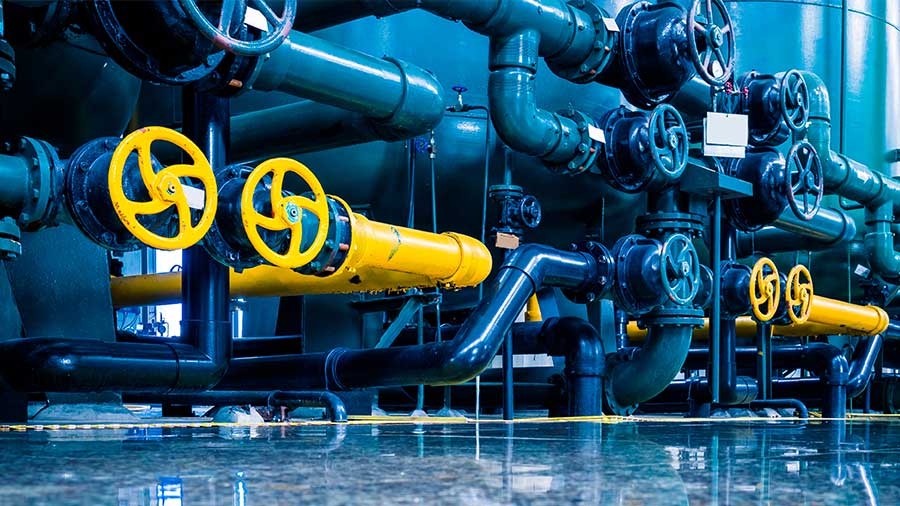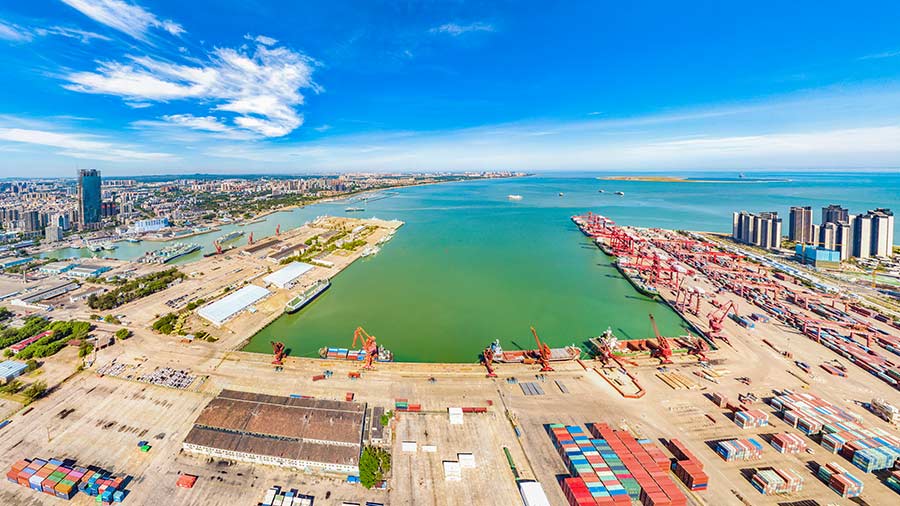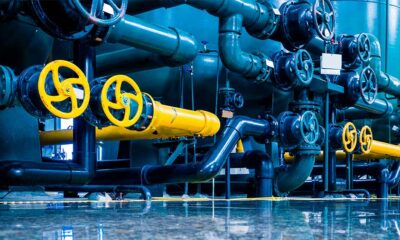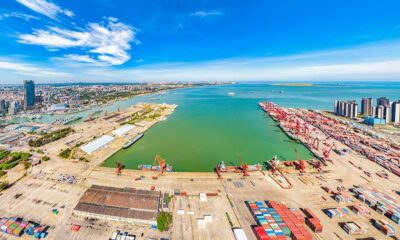China
China arrests more than 1,000 Tibetans protesting Chinese dam project

Police on Friday arrested more than 1,000 Tibetans, including monks from at least two local monasteries, in southwestern China’s Sichuan province after they protested the construction of a dam expected to destroy six monasteries and force the relocation of two villages, two sources from inside Tibet told Radio Free Asia.
The arrested individuals – both monks and local residents – are being held in various places throughout Dege county in Kardze Tibetan Prefecture because the police do not have a single place to detain them, said the sources who requested anonymity for safety reasons.
Those arrested have been forced to bring their own bedding and tsampa – a staple food for Tibetans that can be used to sustain themselves for long periods of time, the sources said.
“That police are asking Tibetans to bring their own tsampa and bedding is a sign that they will not be released anytime soon,” one of the sources said.
On Thursday, Feb. 22, Chinese authorities deployed specially trained armed police in Kardze’s Upper Wonto village region to arrest more than 100 Tibetan monks from Wonto and Yena monasteries along with local residents, many of whom were beaten and injured, and later admitted to Dege County Hospital for medical treatment, sources said.
Citizen videos from Thursday, shared exclusively with RFA, show Chinese officials in black uniforms forcibly restraining monks, who can be heard crying out to stop the dam construction.
Following news of the mass arrests, many Tibetans from Upper Wonto village who work in other parts of the country returned to their hometown and visited the detention centers to call for the release of the arrested Tibetans, sources said. They, too, were arrested.
The Dege County Hospital did not immediately return RFA’s requests for comment.
The Chinese Embassy in Washington hasn’t commented on the arrests other than in a statement issued Thursday that said the country respects the rule of law.
“China protects the legitimate rights and interests of Chinese nationals in accordance with the law,” the statement said.
Massive dam project
The arrests followed days of protests and appeals by local Tibetans since Feb. 14 for China to stop the construction of the Gangtuo hydropower station.
RFA reported on Feb. 15 that at least 300 Tibetans gathered outside Dege County Town Hall to protest the building of the Gangtuo dam, which is part of a massive 13-tier hydropower complex on the Drichu River with a total planned capacity 13,920 megawatts.
The dam project is on the Drichu River, called Jinsha in Chinese, which is located on the upper reaches of the Yangtze, one of China’s most important waterways.
Local Tibetans have been particularly distraught that the construction of the hydropower station will result in the forced resettlement of two villages – Upper Wonto and Shipa villages – and six key monasteries in the area – Yena, Wonto, and Khardho in Wangbuding township in Dege county, and Rabten, Gonsar and Tashi in the Tibetan Autonomous Region, sources told RFA.
Sources on Friday also confirmed that some of the arrested monks with poor health conditions were allowed to return to their monasteries.
However, the monasteries – which include Wonto Monastery, known for its ancient murals dating back to the 13th century – remained desolate on the eve of Chotrul Duchen, or the Day of Miracles, which is commemorated on the 15th day of the first month of the Tibetan New Year, or Losar, and marks the celebration of a series of miracles performed by the Buddha.
“In the past, monks of Wonto Monastery would traditionally preside over large prayer gatherings and carry out all the religious activities,” said one of the sources. “This time, the monasteries are quiet and empty. … It’s very sad to see such monasteries of historical importance being prepared for destruction. The situation is the same at Yena Monastery.”
Protests elsewhere
Tibetans in exile have been holding mass demonstrations in various parts of the world, including in Dharamsala, India, home to the exiled Tibetan spiritual leader, the Dalai Lama.
In the past week, Tibetans have demonstrated before the Chinese embassies, including those in New York and Switzerland, with more such protests and solidarity campaigns planned in Canada and other countries.
“The events in Derge are an example of Beijing’s destructive policies in Tibet,” said Kai Müller, managing director of the International Campaign for Tibet, in a statement on Friday. “The Chinese regime tramples on the rights of Tibetans and ruthlessly and irretrievably destroys valuable Tibetan cultural assets.”
“Beijing’s development and infrastructure projects are not only a threat to Tibetans, but also to regional security, especially when it comes to water supplies to affected Asian countries,” he added.
Human Rights Watch told RFA that it is monitoring the development but that information from inside Tibet is extremely rare given China’s tight surveillance and restrictions imposed on information flow.
“People who send information out and videos like this face imprisonment and torture,” said Maya Wang, the group’s interim China director.
“Even calling families in the diaspora are reasons for imprisonment,” she said. “What we do see now are actually … typical scenes of repression in Tibet, but we don’t often get to see [what] repression looks like in Tibet anymore.”
Additional reporting by Pelbar, Yeshi Dawa, Tashi Wangchuk, Palden Gyal and Sonam Lhamo for RFA Tibetan. Edited by Roseanne Gerin and Malcolm Foster.
Read the rest of this article here >>> China arrests more than 1,000 Tibetans protesting Chinese dam project
China
China Provides Tax Incentives on Special Equipment for Green and Digital Development

China has introduced a new tax incentive for companies investing in digital and smart upgrades of special equipment to encourage environmental protection and safe production. Companies can enjoy a 10 percent deduction from their corporate income tax payable. Eligibility and requirements are outlined by the Ministry of Finance and State Tax Administration.
A new China tax incentive aims to encourage companies to invest in digital and smart upgrades of special equipment. Companies upgrading certain equipment that aids environmental protection and safe production can enjoy a deduction of the investment at a rate of 10 percent from their corporate income tax payable. We explain the requirements of the new tax incentive.
China’s Ministry of Finance (MOF) and State Tax Administration (STA) have issued a new preferential corporate income tax (CIT) incentive for companies investing in digital and intelligent transformations of certain types of equipment. To be eligible for the incentive, companies must invest in the digital and intelligent transformation of equipment related to energy and water conservation, environmental protection, and safe production.
The new tax incentive aligns with a State Council Action Plan, released in March 2024, which aims to accelerate the renewal of large-scale equipment and consumer goods, promoting high-quality development and driving investment and consumption for long-term benefits.
If the annual CIT payable is insufficient for the offset, it can be carried forward to future years for up to five years.
The CIT payable refers to the balance after multiplying the annual taxable income by the applicable tax rate and deducting the tax reductions and exemptions according to China’s CIT Law and relevant preferential policies.
Note that companies enjoying the tax incentives must use the transformed equipment themselves. If the equipment is transferred or leased within five tax years after the transformation is completed, the incentives must stop from the month the equipment is no longer in use, and the previously offset CIT must be repaid.
The “special equipment” eligible for the preferential tax treatment covers equipment purchased and used by companies listed in the Catalog of Special Equipment for Safe Production for Corporate Income Tax Incentives (2018 Edition) and the Catalog of Special Equipment for Energy Saving, Water Conservation, and Environmental Protection for Corporate Income Tax Incentives (2017 Edition).
This article is republished from China Briefing. Read the rest of the original article.
China Briefing is written and produced by Dezan Shira & Associates. The practice assists foreign investors into China and has done since 1992 through offices in Beijing, Tianjin, Dalian, Qingdao, Shanghai, Hangzhou, Ningbo, Suzhou, Guangzhou, Dongguan, Zhongshan, Shenzhen, and Hong Kong. Please contact the firm for assistance in China at china@dezshira.com.
China
Revealing the Encouraged Industries of Hainan in 2024: Unlocking Opportunities

The 2024 Hainan Encouraged Catalogue, issued by the NDRC, MOF, and STA, aims to boost industries in the Hainan Free Trade Port. It prioritizes sectors like tourism, modern services, and high technologies, offering incentives for foreign investment and market access expansion since 2020. The Catalogue includes 176 entries across 14 categories, with 33 new additions focusing on cultural tourism, new energy, medicine and health, aviation, aerospace, and environmental protection.
The National Development and Reform Commission (NDRC), in collaboration with the Ministry of Finance (MOF) and the State Taxation Administration (STA), has issued the Catalogue of Industries Encouraged to Develop in Hainan Free Trade Port (2024 Version), hereinafter referred to as the “2024 Hainan Encouraged Catalogue.” The updated Catalogue took effect on March 1, 2024, replacing the previous 2020 Edition.
Beyond the industries already addressed in existing national catalogues, the new entries in the 2024 Hainan Encouraged Catalogue are based on practical implementation experiences and the specific needs within Hainan, prioritizing sectors such as tourism, modern services, and high technologies.
The Hainan FTP has been providing incentives to draw investors to invest and establish businesses in the region, especially foreign investment. Alongside a phased approach to opening the capital account and facilitating free capital movement, Hainan has significantly expanded market access for foreign enterprises since 2020, particularly in sectors such as telecommunications, tourism, and education.
The Hainan Encouraged Catalogue comprises two main sections:
Similar to the approach adopted by the western regions, foreign-invested enterprises (FIEs) should always implement their production or operations in accordance with the Catalogue of Encouraged Industries for Foreign Investment.
On top of the industries already addressed in existing national catalogues, the 2024 Hainan Encouraged Catalogue encompasses 14 distinct categories and a total of 176 entries especially encouraged in the region, including 33 new additions compared to the 2020 Edition. These new entries predominantly span cultural tourism, new energy, medicine and health, aviation and aerospace, and ecological and environmental protection, among others.
This article is republished from China Briefing. Read the rest of the original article.
China Briefing is written and produced by Dezan Shira & Associates. The practice assists foreign investors into China and has done since 1992 through offices in Beijing, Tianjin, Dalian, Qingdao, Shanghai, Hangzhou, Ningbo, Suzhou, Guangzhou, Dongguan, Zhongshan, Shenzhen, and Hong Kong. Please contact the firm for assistance in China at china@dezshira.com.
China
Key Guidelines for Companies in Compliance Audits for Personal Information Protection Standards

China’s standards authority has released draft standards for personal information protection compliance audits, potentially making them mandatory for companies in 2023. The audits will require companies to undergo annual or biennial checks based on the number of people’s information they handle. The draft standards outline the audit process and requirements, seeking public feedback until September 11, 2024.
China’s standards authority has released draft standards for conducting personal information protection compliance audits. Regular compliance audits to ensure compliance with personal information protection regulations may become a requirement for companies in China under draft measures released in 2023. We explain the audit processes and requirements proposed in the draft standards.
The Standardization Administration of China (SAC) has released a set of draft standards for conducting personal information (PI) protection compliance audits. Under draft measures released by the Cyberspace Administration of China (CAC) in August 2023, companies that process the PI of people in China are required to undergo regular compliance audits.
Specifically, companies that process the PI of over one million people must undergo a compliance audit at least once a year, while companies that process the PI of under one million people must carry out an audit at least once every two years.
While the draft measures stipulate the obligations of the auditing body and the audit scope, the draft standards outline the specific audit process, including evidence management and permissions of the audit organization, as well as the professional and ethical requirements of auditors.
The Secretariat of the National Cybersecurity Standardization Technical Committee is soliciting public feedback on the draft standards until September 11, 2024. Public comment on the draft measures released in August last year closed on September 2, 2023, but no updated document has yet been released.
The draft standards outline five stages of the PI protection compliance audit: audit preparation, implementation, reporting, problem rectification, and archiving management.
Auditors are required to accurately document identified security issues in the audit working papers, ensuring that the records are comprehensive, clear, and conclusive, reflecting the audit plan and its execution, as well as all relevant findings and recommendations.
This article is republished from China Briefing. Read the rest of the original article.
China Briefing is written and produced by Dezan Shira & Associates. The practice assists foreign investors into China and has done since 1992 through offices in Beijing, Tianjin, Dalian, Qingdao, Shanghai, Hangzhou, Ningbo, Suzhou, Guangzhou, Dongguan, Zhongshan, Shenzhen, and Hong Kong. Please contact the firm for assistance in China at china@dezshira.com.






